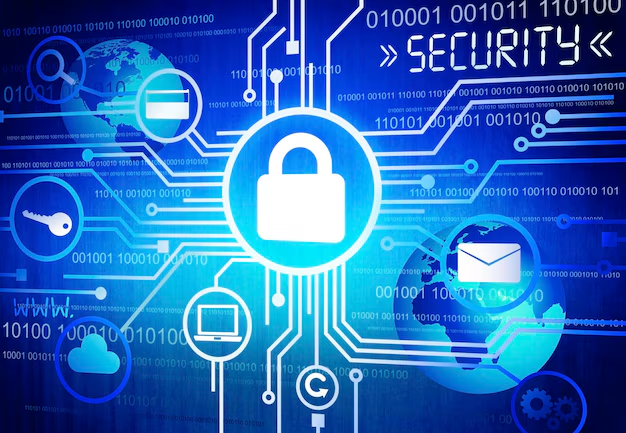The U.S. government entrusts the Department of Defense (DoD) with over $600 billion each year to run the Defense Industrial Base (DIB), making the DoD a prime target for cyberattacks.
As such, if you’re involved in the defense supply chain, you understand more than anyone the need to implement the Cybersecurity Maturity Model Certification (CMMC) Policy Framework to safeguard sensitive information.
While you might be put off by the rigorous cybersecurity standards demanded by the DoD, find relief in knowing that the CMMC framework has been set up to be your roadmap in securing data. Therefore, implementation is vital since noncompliance could result in lost contracts or severe penalties that could jeopardize your business.
But how can you ensure the implementation of the full CMMC policy framework in your company? By adhering to the following best practices that will ensure your organization remains a trusted partner in the defense industrial base.

1. Align with NIST CSF 2.0 Policies, Standards & Procedures
One of the foundational steps you cannot miss in your quest to implement the CMMC Policy Framework is to align your policies with those found in the National Institute of Standards and Technology Cybersecurity Framework.
The NIST framework will offer you a structured approach to managing cybersecurity risks so you can ensure you’re both compliant and secure.
Begin by reviewing the updated NIST CSF 2.0 and then map its guidelines to your organization’s operations. This way, you’ll be able to create policies that define roles, responsibilities, and processes in line with data protection.
Moreover, your standards should be clear on what technical controls you must implement, such as encryption and multi-factor authentication. Similarly, your security procedures must detail how the NIST 2.0 tools will be applied in the day-to-day operations of your business to ensure consistent execution.
Why is this critical? Because the CMMC Policy Framework relies heavily on NIST CSF 2.0 principles to help DoD contractors meet the required maturity level. Therefore, adopting the NIST policies is your secret weapon for building a robust foundation that aligns with the DoD’s expectations.
In this proactive step, you’ll simplify your CMMC compliance journey and protect your organization from evolving cyber threats.

2. Conduct a Comprehensive Gap Analysis
Well, CMMC has its complications; hence, it will be in your best interest to understand where your business stands before you begin wading into its implementation. Well, how would you go about this step? By conducting a thorough gap analysis.
This assessment helps you find out the gaps that exist in your organization in regard to the requirements of CMMC. Think of this as taking inventory before a business trip; it would be pretty ineffective to plan the journey without knowing what one was missing.
Benchmark your existing cybersecurity practice against the five levels of maturity of CMMC, noting all the identified deficiencies in processes, technology, or people training. By that time, pay keen attention to things such as access control, incident response, and auditing systems- some likely weaknesses are showing up and probably derailing the effort.
Identify gaps and prioritize remediation based on risk and impact. If gaps are identified, you should remediate high-risk vulnerabilities so you can keep your organization secure while you work toward full compliance.
Such a tactical approach not only paves the way for compliance but also reflects a great commitment to the protection of the defense supply chain.
3. Implement Role-Based Access Controls (RBAC)
As it were, data protection lies at the center of the CMMC Policy Framework. One of the best ways you can fulfill all of the CMMC data protection measures is by implementing RBAC. An RBAC lets you assign your team system access based on each of their roles. This way, each person only has access to what is just enough for their job.
Why is that important? Well, unauthorized access has been blamed for a lot of data breaches, and by reducing access, you are at least mitigating the risk of sensitive information landing in the wrong hands. For example, including RBAC in everyday work would make sure an employee working in marketing does not have access to any financial records or classified defense information.
But what does RBAC implementation entail? First, one has to define the organization’s roles and grant permissions depending on each role. That doesn’t stop there: you are also expected to go through access logs from time to time and update permissions whenever roles change.
This level of granularity not only assures better security but also assures the exacting demands of compliance by CMMC. It is a simple yet powerful practice that reinforces your commitment to the protection of national security.

4. Invest in Employee Training and Awareness
Your workforce is your first line of defense, and it’s actually training and awareness that makes CMMC work.
This would involve designing a full-scale training program based on organizational needs, discussing issues like how the reports would be dealt with, phishing, and other relevant topics related to data on reporting suspected activities. Make this more engaging with interactive workshops, simulation drills, and periodic updates.
Then comes cybersecurity in corporate culture. Building a compliance culture through consistent messages, recognition, and reward on the part of your staff for demonstrating good practices means that when everyone within your organization realizes his or her role in protecting security, you go a long way toward eliminating a critical risk of human error compromising efforts.
5. Leverage Continuous Monitoring and Auditing
Compliance is not a one-time effort; it’s an everyday process. Continuous monitoring and auditing ensure that your organization remains aligned with the CMMC framework even as threats evolve. This proactive approach allows you to pick out and attend to vulnerabilities before they escalate.
Establish mechanisms that allow you to gain insight into your network’s security in real-time. Such automatic systems may flag anomalies, monitor unauthorized attempts at access, and perform auditing by report generation. The insights you gain shall show you the pattern to strengthen your defense accordingly.
Also, prescribe a frequency for recurring audits to review the status of your compliance. These audits will not only highlight areas of improvement but will also prepare you for the official assessment of the CMMC.

Conclusion
The CMMC Policy Framework is more than a compliance requirement—it’s your opportunity to safeguard sensitive information and strengthen your position in the defense industrial base.
By aligning with NIST CSF 2.0 policies, conducting a gap analysis, implementing role-based access controls, investing in employee training, and leveraging continuous monitoring, you’ll create a robust cybersecurity foundation.
In today’s threat landscape, you can’t afford to take shortcuts. These best practices ensure your organization remains secure, compliant, and competitive.




![‘Jay Kelly’ Review – Noah Baumbach Makes A Case For The Magic Of Movie Stardom [NYFF 2025] ‘Jay Kelly’ Review – Noah Baumbach Makes A Case For The Magic Of Movie Stardom [NYFF 2025]](https://cdn.geekvibesnation.com/wp-media-folder-geek-vibes-nation/wp-content/uploads/2025/11/Jay-Kelly-JKELLY_20240523_15320_C2_R-300x180.jpg)

